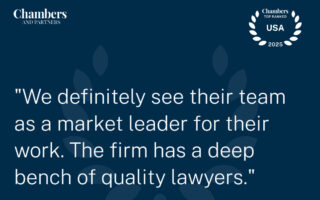Common General Liability Exclusions | The Good, The Bad and The Ugly
Aug 23, 2000
I. INTRODUCTION
The basic general liability policy provides coverage in two parts. The first part, or Coverage A, provides coverage for bodily injury or property damage caused by an occurrence. Coverage B provides liability for specific torts, including a number of intentional torts, giving rise to personal injury or advertising injury liability. Coverage A is frequently described as providing coverage for premises and operations liability and products-completed operations liability.
The exclusions in the general liability policy serve a number of purposes. In part, the exclusions define the scope of liability coverage. In addition, the exclusions are designed to coordinate or “dovetail” with other common and readily available coverages, such as business auto or workers compensation coverage which should be separately insured and are outside the scope of a general liability policy. In addition, the exclusions may serve to preclude coverage for risks that are deemed socially or financially uninsurable, such as war or riots. In addition, a number of exclusions, commonly referred to as “business risks exclusions,” are designed to make sure that the insured is responsible for the performance and quality of its own work or products, and that liability insurance, while protecting for damage caused to other persons or property, does not guarantee the insured’s work.
A. Dovetailing Exclusions.
A number of exclusions in a general liability policy are designed to eliminate coverage that is readily available under another policy. An example is the exclusion for damages arising out of use of an auto. Because most businesses with auto exposures also purchase business auto coverage, the exclusion eliminates an unnecessary overlap in coverage and premium. Similarly, the exclusions for injury to an employee and damages covered by workers’ compensation eliminate coverage that is — or should be — covered under a workers’ compensation policy. Where the insured is a professional, a professional liability exclusion may be added to eliminate the professional liability exposure, which can be underwritten and insured separately and is not anticipated as part of the general premises and operations coverage.
In some situations, both coverages may still apply. Under rules of construction, insuring clauses are construed broadly, while exclusions are construed narrowly; therefore, there is often not a perfect fit. Under the doctrine of concurrent causation, coverage can exist under two policies, or under one policy despite an exclusion, if there is an independent, non-excluded cause. See, e.g., Warrilow v. Norrell, 791 S.W.2d 515 (Tex. App.–Corpus Christi 1989, writ denied) (exclusion for use of an auto did not preclude coverage for accident when gun discharged while changing tire; negligent handling of weapon was independent cause); Guaranty Nat’l Ins. Co. v. North River Ins. Co., 909 F.2d 133 (5th Cir. 1990) (failure to secure windows and failure to observe patient were independent concurrent causes of patient’s death by suicide; the failure to secure the windows was not excluded as a professional service); Clarendon America Ins. Co. v. Bay, Inc., 10 F. Supp. 2d 736, 739 (S.D. Tex. 1998) (although exposure to dust, sand, gravel and silica was barred by pollution exclusion, contact with wet cement arguably was not).
B. Business Risk Exclusions.
Exclusions j, k, l, m, and, to some extent, n, exclude risks related to defects in the insured’s work or product. The exclusions do not extend to catastrophic loss or casualty resulting from the defect, but exclude costs of repair or replacement and economic loss related to an insured’s defective work or product. E.g., Hartford v. Cruse, 938 F.2d 601, 603 (5th Cir. 1991). Texas courts have recently recognized that a claim for breach of contract may state an occurrence. See, e.g., Federated Mut. Ins. Co. v. Grapevine Excavation, Inc., 197 F.3d 720 (5th Cir. 1999). Nevertheless, a liability policy is not designed to warrant or guarantee the insured’s work and, as is frequently explained, is not a performance bond. Moreover, there is a moral hazard. The insured can control the quality of his own work. If insurance allowed an insured to disregard care in the manufacture of products, or provision of services or materials, insurance would displace ordinary good business practices. See T.C. Bateson Constr. Co. v. Lumbermens Mut. Cas. Co., 784 S.W.2d 692 (Tex. App.–Houston [14th Dist.] 1989, writ denied).
C. Catastrophic Exposures.
Exclusions also eliminate coverage for exposures that would be catastrophic and widespread — affecting a great number of insureds or creating an unmanageable number of claimants. The exclusions for war, or for damages arising from nuclear energy, are examples. Certain aspects of pollution claims also involve catastrophic exposures. These risks, while unlikely, are difficult to predict, and cannot be insured for all businesses at a reasonable premium. For many of these risks, businesses with a unique exposure can purchase specialized coverage.
II. CONSTRUCTION
Exclusions are construed narrowly, in favor of the insured. E.g., Barnett v. Aetna Life Ins. Co., 723 S.W.2d 663, 667 (Tex. 1987); Glover v. Nat’l Ins. Undw’rs, 545 S.W.2d 755, 761 (Tex. 1977). They should, however, be construed in the context of the entire policy. Exclusions are sequential. Each exclusion must be read independently, and a conflict between exclusions, or the failure of one exclusion to preclude coverage, does not affect the applicability of other exclusions. Exclusions do not create coverage. An exception, within an exclusion, restores partial coverage but only within the general scope of the insuring agreement.
Most exclusions are subject to severability language. General liability policies typically provide, in the Conditions, that the policy must be read separately as to each insured. Accordingly, the exclusions must be reviewed as to each insured seeking coverage. E.g., Walker v. Lumbermens Mut. Cas. Co., 491 S.W.2d 696 (Tex. Civ. App. 1973) (exclusion for intentional acts in homeowners policy did not apply to father held liable for son’s conduct); Commercial Standard Ins. Co. v. Am. Gen’l Ins. Co., 455 S.W.2d 714 (Tex. 1970) (employee exclusion applied separately to each insured); Western Heritage Ins. Co. v. Magic Years Learning Centers and Child Care, Inc., 45 F.3d 85 (5th Cir. 1995) (abuse and molestation exclusion did not apply to claims against wife and corporation for husband’s conduct); cf. Travelers Indem. Co. v. Citgo Petrol. Corp., 166 F.3d 761 (5th Cir. 1999) (exclusion applied to use of auto by any insured). In this context, the pronouns become important. “An” or “any” insured implies that the exclusion applies to each insured, if it applies to any insured. “The insured,” however, must be read individually, and may exclude coverage for one insured, but allow coverage for another. Magic Years, 45 F.3d at 89-90.
III. ISO EXCLUSIONS
While different versions of the ISO general liability forms vary slightly, most of the exclusions are similar in language and intent. The examples are taken from the 1996 ISO form, which remains in common usage.
A. Coverage A: Bodily Injury and Property Damage Liability.
Expected or Intended Injury: Exclusion a.
“Bodily injury” or “property damage” expected or intended from the standpoint of the insured. This exclusion does not apply to “bodily injury” resulting from the use of reasonable force to protect persons or property.
Exclusion a. complements and reinforces the definition of “occurrence.” Prior to 1986, the ISO definition of “occurrence” required that it be unexpected or unintended. In the 1986 form, the definition was simplified and exclusion was added. Significantly, the exclusion focuses on the standpoint of the insured, not the claimant. This language is also subject to the severability clause, so conduct intended by one insured may not be excluded as to another. See, e.g., Walker v. Lumbermen’s Mut. Cas. Co., 491 S.W.2d 696 (Tex. Civ. App.–Eastland 1973, no writ) (exclusion did not bar coverage for insured for son’s intentional property damage).1
Intentional conduct that has unforeseeable consequences will not trigger the exclusion. E.g., State Farm Fire & Cas. Co. v. S.S. & G.W., 858 S.W.2d 374 (Tex. 1993); see also Gulf Chem. & Metallurgical Corp. v. Assoc. Metals & Minerals Corp., 1 F.3d 365, 370 (5th Cir. 1993) (question is whether damage was expected or intended).2 Intoxication, however, typically does not vitiate intent. See State Farm Fire and Cas. Co. v. Brooks, 43 F. Supp. 2d 695 (E.D. Tex. 1998).
Contractual Liability: Exclusion b.
“Bodily injury” or “property damage” for which the insured is obligated to pay damages by reason of the assumption of liability in a contract or agreement. This exclusion does not apply to liability for damages:
1) That the insured would have in the absence of the contract or agreement.
2) Assumed in a contract or agreement that is an “insured contract,” provided the “bodily injury” or “property damage” occurs subsequent to the execution of the contract or agreement. Solely for the purposes of liability assumed in an “insured contract,” reasonable attorney fees and necessary litigation expenses incurred by or for a party other than an insured are deemed to be damages because of “bodily injury” or “property damage”, provided:
a) Liability to such party for, or for the cost of, that party’s defense has also been assumed in the same “insured contract”; and
b) Such attorney fees and litigation expenses are for defense of that party against a civil or alternative dispute resolution proceeding in which damages to which this insurance applies are alleged.
The reference to “assumption of liability” refers to indemnity obligations, not mere contractual obligations. See T.C. Bateson Constr. Co. v. Lumbermens Mut. Cas. Co., 784 S.W.2d 692, 699 (Tex. App.–Houston [14th Dist.] 1989, writ denied); see also Federated Mut. Ins. Co. v. Grapevine Excavation, Inc., 197 F.3d 720, 726 (5th Cir. 1999); E&R Rubalcava Constr., Inc. v. Burlington Ins. Co., 2000 U.S. Dist. LEXIS 7260 (N.D. Tex., May 25, 2000).
While the exclusion excepts the named insured’s indemnity obligations, this exception remains subject to the insuring agreement and other exclusions in the policy. Moreover, the exception does not apply to all indemnity obligations of an additional or omnibus insured. The definition of “insured contract” lists several specific contractual arrangements (i.e., lease of premises, sidetrack agreement). It also includes a kitchen sink provision for “that part of any other contract or agreement pertaining to your business . . . under which you assume the tort liability of another . . . .” Because “you” and “your” are defined as exclusively the named insured, an additional insured’s indemnity obligation are not an “insured contract” within this provision.
Liquor Liability: Exclusion c.
“Bodily injury” or “property damage” for which any insured may be held liable by reason of:
1) Causing or contributing to the intoxication of any person;
2) The furnishing of alcoholic beverages to a person under the legal drinking age or under the influence of alcohol; or
3) Any statute, ordinance or regulation relating to the sale, gift, distribution or use of alcoholic beverages.
This exclusion applies only if you are in the business of manufacturing, distributing, selling, serving or furnishing alcoholic beverages.
The liquor liability exclusion precludes coverage for dram shop liability. For insureds not in an alcohol-related business, this is not a large exposure, and is not excluded. For restaurants and bars, liquor liability coverage is available for an appropriate premium. The exclusion has been readily applied to accidents involving the sale or service of alcohol. See Abe’s Colony Club, Inc. v. C&W Underwriters, Inc., 852 S.W.2d 86, 89 (Tex. App.–Fort Worth 1993, writ denied); Thornhill v. Houston Gen’l Lloyds, 802 S.W.2d 127, 130 (Tex. App.–Fort Worth 1991, writ denied); Western Heritage Ins. Co. v. River Entertainment, 998 F.2d 311, 315 (5th Cir. 1993) (applying Texas law). Other allegations of negligent conduct will not be used to avoid application of the exclusion if there is a nexus to sale of alcohol. E.g., Thornhill, 802 S.W.2d at 129 (exclusion applied despite allegations insured negligently entrusted sale of alcoholic beverages to a minor, and failed to properly supervise and train employees); Abe’s Colony Club, Inc., 852 S.W.2d at 89 (allegations of failure to determine patron was intoxicated, failing to offer alternative transportation, and failure to properly train or supervise employees all fell within exclusion); Paradigm Ins. Co. v. Texas Richmond Corp., 942 S.W.2d 645 (Tex. App.–Houston [14th Dist.] 1997, writ denied) (exclusion applied to allegations that club negligently hired and trained employees, and failed to restrain patrons or arrange alternative transportation). In Western Heritage, the claimant sought to invoke coverage by deleting all references to alcohol from its pleading. In a declaratory action, the court noted it was impossible, from the face of the complaint, to determine why the insured was negligent in allowing the patron to drive away, and allowed extrinsic evidence of the facts to defeat coverage.
Workers’ Compensation: Exclusion d.
Any obligation of the insured under a worker’s compensation, disability benefits or unemployment compensation law or any similar law.
This exclusion precludes coverage for claims for which workers’ compensation is afforded. See Nat’l Union Fire Ins. Co. v. Kasler Corp., 906 F.2d 196 (5th Cir. 1990).
Injury to an Employee: Exclusion e.
“Bodily injury” to:
1) Any “employee” of the insured arising out of and in the course of:
a) Employment by the insured; or
b) Performing duties related to the conduct of the insured’s business; or
2) The spouse, child, parent, brother or sister of that “employee” as a consequence of (1) above.
This exclusion applies:
1) Whether the insured may be liable as an employer or in any other capacity; and
2) To any obligation to share damages with or repay someone else who must pay damages because of the injury.
This exclusion does not apply to liability assumed by the insured under an “insured contract.”
The exclusion has been held to be unambiguous. See Aberdeen Ins. Co. v. Bovee, 777 S.W.2d 442 (Tex. App.–El Paso 1989, no writ) (exclusion applied to sexual harassment claim); Travelers Indem. Co. v. Cen-Texas Vending Co., 530 S.W.2d 354, 355 (Tex. Civ. App.–Eastland 1975, writ ref’d n.r.e.); Nat’l Union Fire Ins. Co. v. Kasler Corp., 906 F.2d (5th Cir. 1990) (unambiguously applied to injuries sustained in course of employment). The exclusion applies to injuries occurring while the employee is performing work-related duties. E.g., Nautilus Ins. Co. v. Zamora, 114 F.3d 536 (5th Cir. 1997) (cashier shot when three men entered restaurant and began shooting was injured in course of employment); Nat’l Union Fire Ins. Co. v. Nat’l Convenience Stores, Inc., 891 S.W.2d 20 (Tex. App.–San Antonio 1994, no writ) (all acts of harassment occurred on employer’s premises and during office hours or office party).
This is another exclusion where severability is important. An additional insured, or one qualifying under the definition as “an insured” may not be the employer. Therefore, coverage may be excluded as to the named insured, but not other insureds. Similarly, the exclusion excepts contractual liability obligations. See, e.g., Admiral Ins. Co. v. Trident NGL, Inc., 988 S.W.2d 451 (Tex. App.–Houston [1st Dist.] 1999, pet. denied).
Absolute Pollution Exclusion: Exclusion f.
1) “Bodily injury” or “property damage” arising out of the actual, alleged or threatened discharge, dispersal, seepage, migration, release or escape of pollutants:
a) At or from any premises, site or location which is or was at any time owned or occupied by, or rented or loaned to, any insured;
b) At or from any premises, site or location which is or was at any time used by or for any insured or others for the handling, storage, disposal, processing or treatment of waste;
c) Which are or were at any time transported, handled, stored, treated, disposed of, or processed as waste by or for any insured or any person or organization for whom you may be legally responsible; or
d) At or from any premises, site or location on which any insured or any contractors or subcontractors working directly or indirectly on any insured’s behalf are performing operations:
i) if the pollutants are brought on or to the premises, site or location in connection with such operations by such insured, contractor or subcontractor; or
ii) if the operations are to test for, monitor, clean up, remove, contain, treat, detoxify or neutralize, or in any way respond to, or assess the effects of pollutants.
Subparagraph (d)(i) does not apply to “bodily injury” or “property damage” arising out of the escape of fuels, lubricants or other operating fluids which are needed to perform the normal electrical, hydraulic or mechanical functions necessary for the operation of “mobile equipment” or its parts, if such fuels, lubricants or other operating fluids escape from a vehicle part designed to hold, store or receive them. This exception does not apply if the fuels, lubricants or other operating fluids are intentionally discharged, dispersed or released, or if such fuels, lubricants or other operating fluids are brought on or to the premises, site or location with the intent to be discharged, dispersed or released as part of the operations being performed by such insured, contractor or subcontractor.
Subparagraphs (a) and (d)(i) do not apply to “bodily injury” or “property damage” arising out of heat, smoke or fumes from a hostile fire.
As used in this exclusion, a hostile fire means one which becomes uncontrollable or breaks out from where it was intended to be.
2) Any loss, cost or expense arising out of any:
a) Request, demand or order that any insured or others test for, monitor, clean up, remove, contain, treat, detoxify or neutralize, or in any way respond to, or assess the effects of pollutants; or
b) Claim or suit by or on behalf of a governmental authority for damages because of testing for, monitoring, cleaning up, removing, containing, treating, detoxifying or neutralizing, or in any way responding to, or assessing the effects of pollutants.
Pollutants means any solid, liquid, gaseous or thermal irritant or contaminant, including smoke, vapor, soot, fumes, acids, alkalis, chemicals and waste. Waste includes materials to be recycled, reconditioned or reclaimed.
This exclusion, the so-called “absolute pollution” exclusion, is unambiguous and enforceable under Texas law. See Nat’l Union Fire Ins. Co. v. CBI Indus., 907 S.W.2d 517, 521-22 (Tex. 1995). Yet, litigation continues. At issue now are what constitutes a “pollutant,” or “waste,” and what other requirements such as “occupy” mean.
In American States Ins. Co. v. Nethery, 79 F.3d 473 (5th Cir. 1996) the court, construing Mississippi law, rejected arguments that “pollution” was limited to widespread environmental harm. The court reasoned that any substance acting as an “irritant” or “contaminant” could be a pollutant even if it did not always, or normally, inflict injury. Id. at 476. Accordingly, the court held that paint and glue fumes were pollutants. Id. at 474.
Courts construing Texas law have adopted the same approach. In Constitution State Ins. Co. v. Iso-Tex. Inc., 61 F.3d 405 (5th Cir. 1995), the court held that biomedical radioactive waste was a pollutant. In Certain Undw’rs at Lloyds v. C.A. Turner Constr. Co., 112 F.3d 184 (5th Cir. 1997), the court held that phenol gas, to which workers were exposed during welding operations, was a pollutant. And, in Clarendon America Ins. Co. v. Bay, Inc., 10 F. Supp. 2d 736 (S.D. Tex. 1993), the court held that “dust, sand, gravel, silica and other particles” to which the plaintiffs were exposed constituted pollutants. See also Bituminous Cas. Corp. v. Kenworthy Oil Co., 912 F. Supp. 238, 241 (W.D. Tex. 1996), aff’d, 105 F.3d 6561 (5th Cir. 1996) (absolute pollution exclusion barred coverage for groundwater contamination caused by oil and gas production); Crown Central Petrol. Corp. v. Rust Scaffold Builders, Inc., 951 F. Supp. 636, 642 (S.D. Tex. 1996) (exclusion barred coverage for injuries resulting from exposure to airborne hydrofluoric acid).
Although the policy defines a pollutant to include “waste,” the exclusion would not apply where the insured’s business is the recycling or reprocessing of waste materials. See Mid-Continent Cas. Co. v. Safe Tire Disposal Corp., 16 S.W.3d 418 (Tex. App.–Waco 2000, pet. filed). In Safe Tire, the insured was in the business of reprocessing used tires for fuel. A fire broke out, causing smoke damage to surrounding residents. The court first reasoned that, although “smoke” is a pollutant, the hostile fire exception applied. Id. at 421. The court then turned its attention to Mid-Continent’s argument that the pollutants were dispersed from the site used for “processing” of “waste.” Mid-Continent relied on Krueger Commodities, Inc. v. United States Fid. & Guar. Co., 923 F. Supp. 1474 (N.D. Ala. 1996) in which the exclusion was applied to offensive odors and the rendering plant. The court reasoned that, while used tires might be “waste” in some context, to hold that the processed material made from the used tires was “waste” in the context of the tire reprocessing facility which defeats the hostile fire exception. Id. at 424. The court concluded that, in context, the rubber chips were not an unwanted by-product, but were the desired product. See also In re Hub Recycling, Inc., 106 B.R. 372 (D. N.J. 1989); Maffei v. Northern Ins. Co. of N.Y., 12 F.3d 892 (9th Cir. 1993).
In Kelley-Coppedge, Inc. v. Highlands Ins. Co., 980 S.W.2d 462 (Tex. 1998), the court addressed the meaning of “occupied.” In the underlying case, the insured, KCI, an oil and gas pipeline contractor, was working under contract with Natural Gas Pipeline Co. of America (NGP). The work site was an easement granted NGP on a third-party’s property. During the work, KCI inadvertently struck a Mobil Oil pipeline, causing the release of crude oil onto the landowner’s property. The insurer paid for repair of the pipeline and the lost oil, but denied coverage for cleanup costs, relying on subpart f(1)(a) of the absolute pollution exclusion.
The court focused on whether KCI’s operations on the easement constituted “occupying” the landowner’s premises, or whether “to occupy” implied some possessory right. The court reviewed Tri-County Service Co. v. Nationwide Mutual Ins. Co., 873 S.W.2d 719, 720 (Tex. App.–San Antonio 1993, writ denied), in which the San Antonio Court of Appeals held that a contractor, spraying oil on a parking lot when rain washed the oil into a nearby creek, was “occupying” the lot.
Ultimately, a majority of the Texas Supreme Court, led by Justice Spector, concluded that “to occupy” required something more than a mere physical presence. The court distinguished, but did not overrule, the prior Tri-County case. The court reasoned that if any presence — no matter how transitory — constituted occupancy, subpart f(1)(d) would be rendered meaningless. The court agreed with the Fifth Circuit opinion in Gregory v. Tennessee Gas Pipeline Co., 948 F.2d 203 (5th Cir. 1991) (construing Louisiana law) that to occupy means “to hold or keep for use.” The dissent, led by Justice Gonzales, would have held that, because NGP was required to furnish “right of way” to KCI under the contract, and granted KCI the right to conduct operations within the right of way, KCI effectively had exclusive control. The dissent also argued, however, that a contractor could occupy property without exclusive control, simply by being there.
Sudden and Accidental.
Older forms of the exclusion (pre-1986) include an exception for “sudden and accidental” polluting events. The 1973 policy provided that the insurance did not apply:
to bodily injury or property damage arising out of the discharge, dispersal, release or escape of smoke, vapors, soot, fumes, acids, alkalis, toxic chemicals, liquids or gases, waste materials or other irritants, contaminants or pollutants into or upon land, the atmosphere or any water course or body of water; but this exclusion does not apply if such discharge, dispersal, release or escape is sudden and accidental.
The meaning of “sudden and accidental” has been vigorously litigated for two decades. At issue, in part, is whether the event must be merely unexpected, or whether “sudden” conveys a temporal element. Texas appears to adopt the temporal requirement. Gulf Metals Indus., Inc. v. Chicago Ins. Co., 993 S.W.2d 800 (Tex. App.–Austin 1999, pet. denied); see also Mesa Operating Co. v. Cal Union Ins. Co., 986 S.W.2d 749 (Tex. App.–Dallas 1999, pet. denied); Mustang Tractor & Equip. v. Liberty Mut. Ins. Co., 76 F.3d 89, 91 (5th Cir. 1996); SnyderGeneral Corp. v. Century Indem. Co., 907 F. Supp. 991, 997 (N.D. Tex.), aff’d in part, vacated in part, 113 F.3d 536 (5th Cir. 1997).
Pollution Buy-Backs.
Insureds with a specific pollution exposure may be able to “buy-back” limited coverage. For instance, an endorsement for short-term pollution events provides coverage, on a limited basis, for an escape or release of pollutants within a 48-hour period.
1998 Changes.
In addition, the 1998 form — not yet in wide usage — restores some coverage for release of pollutants, brought to the site in conjunction with the insured’s operations. The 1998 form also excepts from the exclusion bodily injury, sustained within a building, from smoke, vapor, fumes or soot from equipment used to heat the building. In addition, the 1998 form expands coverage for the named insured, where an additional insured owns the site.
Use of an Aircraft, Auto or Watercraft: Exclusion g.
“Bodily injury” or “property damage” arising out of the ownership, maintenance, use or entrustment to others of any aircraft, “auto” or watercraft owned or operated by or rented or loaned to any insured. Use includes operation and “loading or unloading.”
This exclusion does not apply to:
1) A watercraft while ashore on premises you own or rent;
2) A watercraft you do not own that is:
a) Less than 26 feet long; and
b) Not being used to carry persons or property for a charge;
3) Parking an “auto” on, or on the ways next to, premises you own or rent, provided the “auto” is not owned by or rented or loaned to you or the insured;
4) Liability assumed under any “insured contract” for the ownership, maintenance or use of aircraft or watercraft; or
5) “Bodily injury” or “property damage” arising out of the operation of any of the equipment listed in paragraph f.(2) or f.(3) of the definition of “mobile equipment.”
Aircraft and watercraft usage can be separately insured, where this exposure exists.
The exclusion for use of an auto is intended to avoid an overlap in coverage, and premium, and to relegate to the auto carrier all risks associated to “use” of an auto. See, e.g., Travelers Indem. Co. v. Citgo Petrol. Corp., 166 F.3d 761 (5th Cir. 1999). But what is use? The exclusion itself encompasses loading and unloading. Clearly, driving a vehicle is using it. But what about less conventional “uses”? Typically, “use” involves some use of the auto “qua auto,” and not merely its physical presence or existence. E.g., Nat’l Union Fire Ins. Co. v. Merchants Fast Motor Lines, Inc., 939 S.W.2d 139, 142 (Tex. 1997). In U.S. Fire Ins. Co. v. USAA, 772 S.W.2d 218, 221 (Tex. App.–Dallas 1989, writ denied), the court concluded that a passenger who grabbed the steering wheel was “using” the vehicle. On the other hand, tripping in the parking lot — even if coming to or from an auto — is not “use.” Flores v. Dairyland County Mut. Ins. Co., 595 S.W.2d 893 (Tex. App.–Eastland 1980, writ ref’d n.r.e.).
While many of the cases involve insuring agreements rather than exclusions — and thus the mandate to construe broadly rather than narrowly, the analysis should not be too dissimilar. In Texas, analogies can also be drawn to cases under the Tort Claims Act. E.g., LeLeaux v. Hamshire-Fannett I.S.D., 835 S.W.2d 49 (Tex. 1992) (injury when student hit head on door frame while entering through emergency door did not arise out of operation of bus); Estate of Garza v. McAllen I.S.D., 613 S.W.2d 526 (Tex. Civ. App.–Beaumont 1981, writ ref’d n.r.e.) (stabbing incident on bus did not arise out of use of motor vehicle).
In an opinion that resorts to circuitous logic and skews prior precedent, the Texas Supreme Court recently held that climbing through a truck’s rear window to retrieve clothing, thereby accidentally touching a loaded gun on the gun rack, and causing it to discharge and injure a passenger in a parked car, is “use” of an auto. See Mid-Century Ins. Co. v. Lindsey, 997 S.W.2d 153 (Tex. 1999). The court acknowledged that the language requires some causal connection or relation between the injury and the use of a vehicle, and reconfirmed that the use of the vehicle must be as a vehicle, and not simply as an article of property. The court further noted that, “whether a person is using the vehicle depends not only on his conduct but on his intent.” The court also acknowledged prior precedent regarding drive-by shootings and accidental discharge of weapons that were not considered use of an auto. Nevertheless, the court concluded that the boy’s sole purpose in climbing through the window was to gain entry into the truck, and that his method, while unorthodox, was not an unexpected or unnatural use of the vehicle. While the case arose in the context of an auto policy, not a CGL exclusion, much of the reasoning should apply equally in either context.
While a gun rack may be virtually inseparable from use of an auto, use of a gun is not. E.g., Merchants Fast Motor Lines, 939 S.W.2d at 142 (negligent discharge of firearm while driving did not cause injury “arising from” use of an auto). Accord State Farm Mut. Ins. Co. v. Whitehead, 988 S.W.2d 744 (Tex. 1999) (in uninsured motorist case, damages sustained when passenger in one vehicle shot and killed driver of other vehicle did not arise out of use of an auto; criminal or intentional acts had mere incidental relationship to vehicle); Collier v. Employers Nat’l Ins. Co., 861 S.W.2d 286, 289-90 (Tex. App.–Houston [14th Dist.] 1993, writ denied) (no coverage in UM case for shooting between vehicles).
Even before the language was modified to include “entrustment,” claims of negligent entrustment were considered to arise out of use of an auto. E.g., Fidelity and Guar. Ins. Undw’rs, Inc. v. McManus, 633 S.W.2d 787 (Tex. 1982). Similarly, claims of negligent hiring or supervision cannot be used to avoid the exclusion. See Centennial Ins. Co. v. Hartford Acc. & Indem. Co., 821 S.W.2d 192 (Tex. App.–Houston [14th Dist.] 1991, no writ).
A separate body of cases has struggled with when loading and unloading begins and ends. In Travelers Ins. Co. v. Employers Cas. Co., 380 S.W.2d 610 (Tex. 1964), a crane collapsed and killed three people while it was being used to move concrete from a truck to the concrete forms. Id. at 611. The court found coverage under the auto, and not the general liability, policy, as the accident arose from unloading. The court adopted language construing “loading and unloading” as “’embracing not only the immediate transference of the goods to or from the vehicle, but the ‘complete operation’ of transporting goods between the vehicle and the place from or to which they are being delivered.'” (quoting Wayman v. American Fid. & Cas. Co., 109 N.E.2d 592 (1952)). See also Comm. Standard Ins. Co. v. American Gen’l Ins. Co., 455 S.W.2d 714 (Tex. 1970). However, in Home State County Mut. Ins. Co. v. Acceptance Ins. Co., 958 S.W.2d 263 (Tex. App.–Amarillo 1997, no writ) the court held the exclusion did not apply where unloading was completed before collision with load of rock and sand delivered by insured. The court reached this conclusion, despite the fact that there were more loads to be delivered by the insured. Cf. Hartford Fire Ins. Co. v. Rainbow Drilling, 748 S.W.2d 262 (Tex. App.–Houston [14th Dist.] 1988, writ denied) (transportation of drilling rig not complete until gin pole trucks lifted and placed components in position); but see Coastal Transport Co. v. Crown Central Petrol. Corp., 20 S.W.3d 119 (Tex. App.–Houston [14th Dist.] 2000, no pet. h.) (no coverage under auto policy where defendant sued for negligent maintenance of facility, not loading operation).
Mobile Equipment: Exclusion h.
“Bodily injury” or “property damage” arising out of:
1) The transportation of “mobile equipment” by an “auto” owned or operated by or rented or loaned to any insured; or
2) The use of “mobile equipment” in, or while in practice or preparation for, a prearranged racing, speed or demolition contest or in any stunting activity.
Transportation of mobile equipment is typically covered under a business auto policy. However, actual use of the mobile equipment, which is typically off-road use related to the insured’s operations, is a general liability exposure. The definition of “auto” excepts “mobile equipment.”
Racing and stunt activities are high-risk, specialty exposures that must be underwritten and insured on an individual basis.
War: Exclusion i.
“Bodily injury” or “property damage” due to war, whether or not declared, or any act or condition incident to war. War includes civil war, insurrection, rebellion or revolution. This exclusion applies only to liability assumed under a contract or agreement.
Business Risk/Work Product: Exclusion j.
“Property damage” to:
1) Property you own, rent, or occupy;
2) Premises you sell, give away or abandon, if the “property damage” arises out of any part of those premises;
3) Property loaned to you;
4) Personal property in the care, custody or control of the insured;
5) That particular part of real property on which you or any contractors or subcontractors working directly or indirectly on your behalf are performing operations, if the “property damage” arises out of those operations; or
6) That particular part of any property that must be restored, repaired or replaced because “your work” was incorrectly performed on it.
Paragraph (2) of this exclusion does not apply if the premises are “your work” and were never occupied, rented or held for rental by you.
Paragraphs (3), (4), (5) and (6) of this exclusion do not apply to liability assumed under a sidetrack agreement.
Paragraph (6) of this exclusion does not apply to “property damage” included in the “products-completed operations hazard.”
Subparts j(1) and j(3) avoid conversion of a liability policy into first party property insurance.
Subpart j(4) incorporates the older “care, custody and control” exclusion. This exclusion is typically construed to apply only to the actual part of any property upon which the insured is performing operations or exercising control. E.g., Goswick v. Employers Cas. Co., 440 S.W.2d 287 (Tex. 1969); Maryland Cas. Co. v. Golden Jersey Creamery, 389 S.W.2d 701 (Tex. Civ. App.–Corpus Christi 1965, writ ref’d n.r.e.). It also applies to the legal right of possession or “custody,” such as bailment. E.g., Cindrich v. Fireman’s Fund Ins. Co., 432 P.2d 919 (Ariz. App. 1967). In AIU Ins. Co. v. Mallay Corp., 938 F. Supp. 407 (S.D. Tex. 1996), aff’d, 116 F.3d 1478 (1997), the court applied a “care, custody or control” exclusion when the insured, while working on a turbine, damaged it in the process of turning it on a lathe.
In Blue Marlin Constr. Co. v. General Star Indem. Co., 16 F.Supp.2d 762 (S.D. Tex. 1998), the court held that pile driving equipment was within the care, custody or control of the insured when the insured’s crane buckled, damaging the pile driving equipment. In Blue Marlin, the insured was retained to provide equipment and labor in connection with pile driving. The insured provided their own crane, although it was used, at some times, by the general contractor’s employees. At the time of the accident, the insured’s employees were moving a heavy piece of pile driving equipment with a crane owned by the insured. The equipment consisted of two parts, a hammer and a power pack, connected by a series of hoses and wires. After moving the hammer with the crane, the insured repositioned the crane to pick up the power pack and hoses. While lifting the power pack, the crane buckled and the power pack fell on top of the hammer, damaging both component parts. No other equipment was damaged. The court rejected the insured’s argument that the exclusion precluded coverage only in cases where the insured had total and exclusive control over the damaged property. Although the general contractor’s own employees participated in directing the insured where to move the hammer, the court concluded that, regardless of who directed the insured, at the time the property was damaged, it was in the insured’s care, custody or control.
Subpart j(4) was also applied to exclude coverage for the insured’s stock of processed almonds contaminated with wood splinters. Shade Foods, Inc. v. Innovative Prods. Sales & Marketing, Inc., 78 Cal. App. 4th 847, 867 (Cal. App. 2000).
Subpart j(5) applies only while operations are ongoing. In Houston Bldg. Services, Inc. v. American Gen’l Fire & Cas. Co., 799 S.W.2d 308, 310 (Tex. App.–Houston [1st Dist.] 1990, writ denied). The court concluded that because the work was performed under an ongoing maintenance contract. The operations were not completed. In Gar-Tex Constr. Co. v. Employers Cas. Co., 771 S.W.2d 639, 642 (Tex. App.–Dallas 1989, writ ref’d n.r.e.), the insured was “occupying” the site, although it had no employees present, because the work under contract was not completed.
Subpart j(6) applies to defective work. Because of the exception for completed operations, it applies only to damage while the work is being performed. It is limited to damage to the insured’s work, and does not preclude damage to other property, or even other non-defective work. E.g., Gar-Tex Constr. Co. v. Employers Cas. Co., 771 S.W.2d 639, 642 (Tex. App.–Dallas 1989, writ denied); Dorchester Devm’t Corp., 737 S.W.2d 380, 382 (Tex. App.–Dallas 1987, no writ). Faulty work, within the exclusion, includes work that does not meet specifications. E.g., Gar-Tex, 711 S.W.2d at 643; Eulich v. Home Indem. Co., 503 S.W.2d 846, 849 (Tex. Civ. App.–Dallas 1973, writ ref’d n.r.e.); see also E&R Rubalcava Constr. Inc. v. Burlington Ins. Co., 2000 U.S. Dist. LEXIS 7260 (N.D. Tex., May 25, 2000) (similar exclusion applied to defective foundation, but not cost of other repairs).







